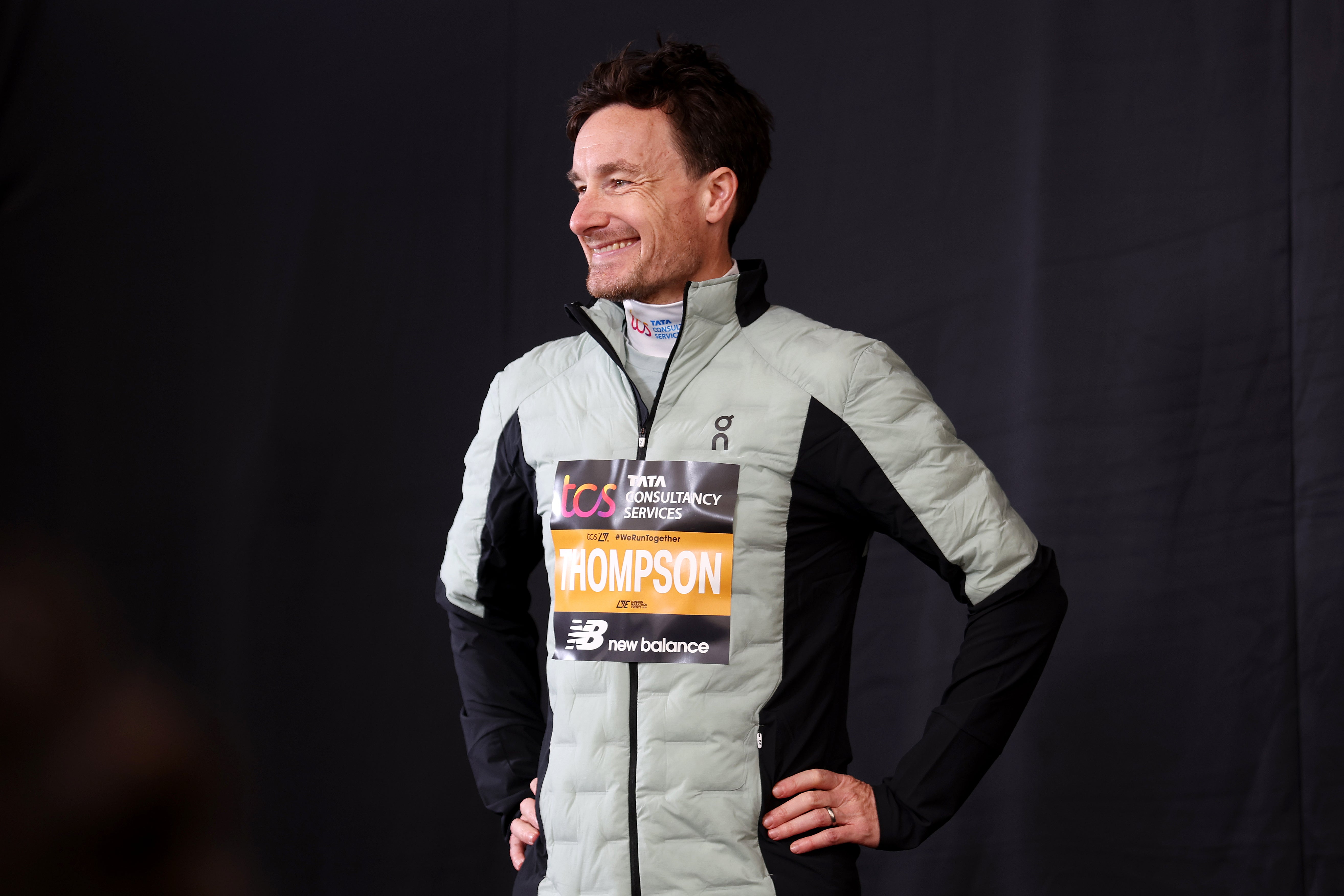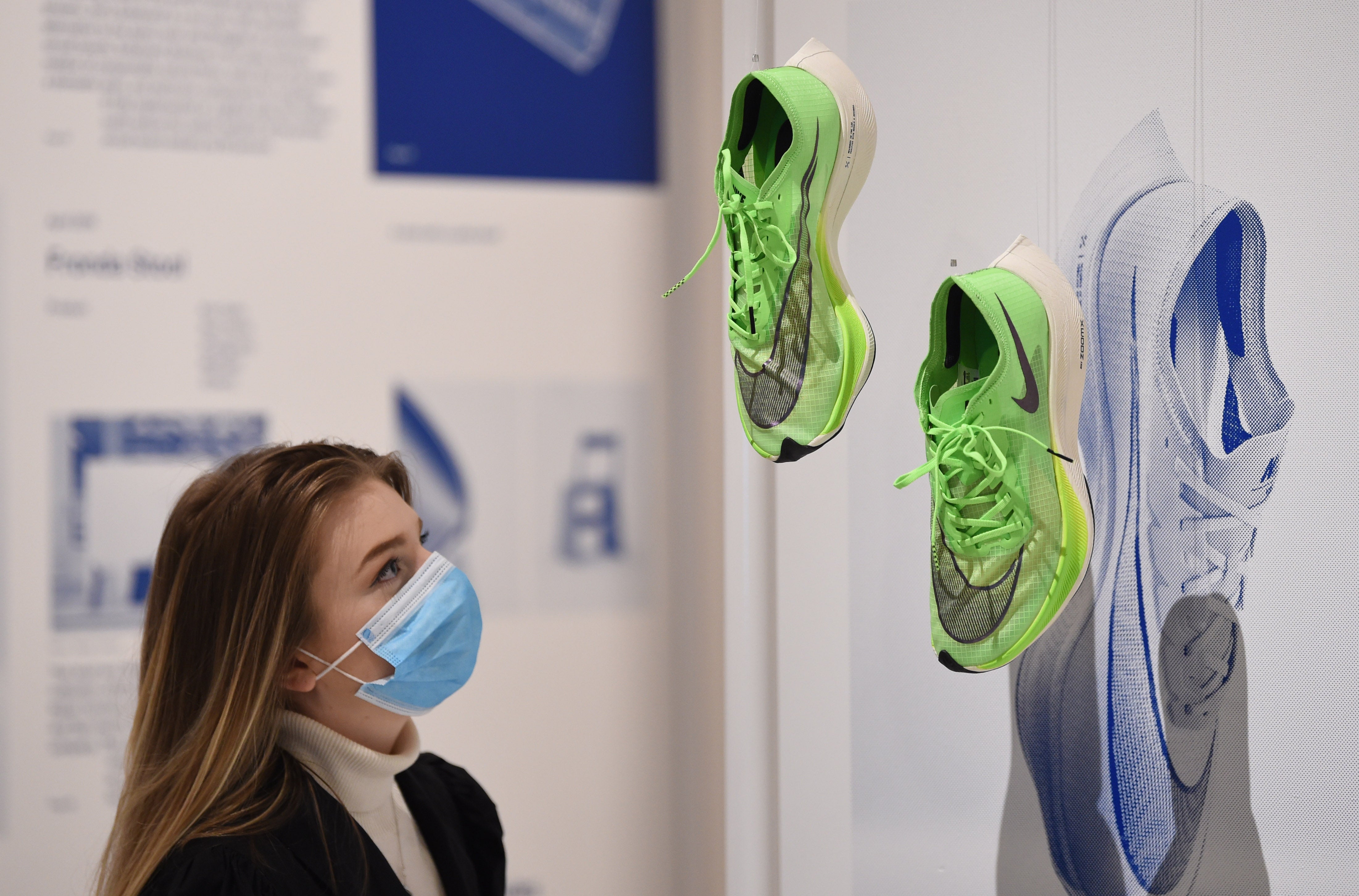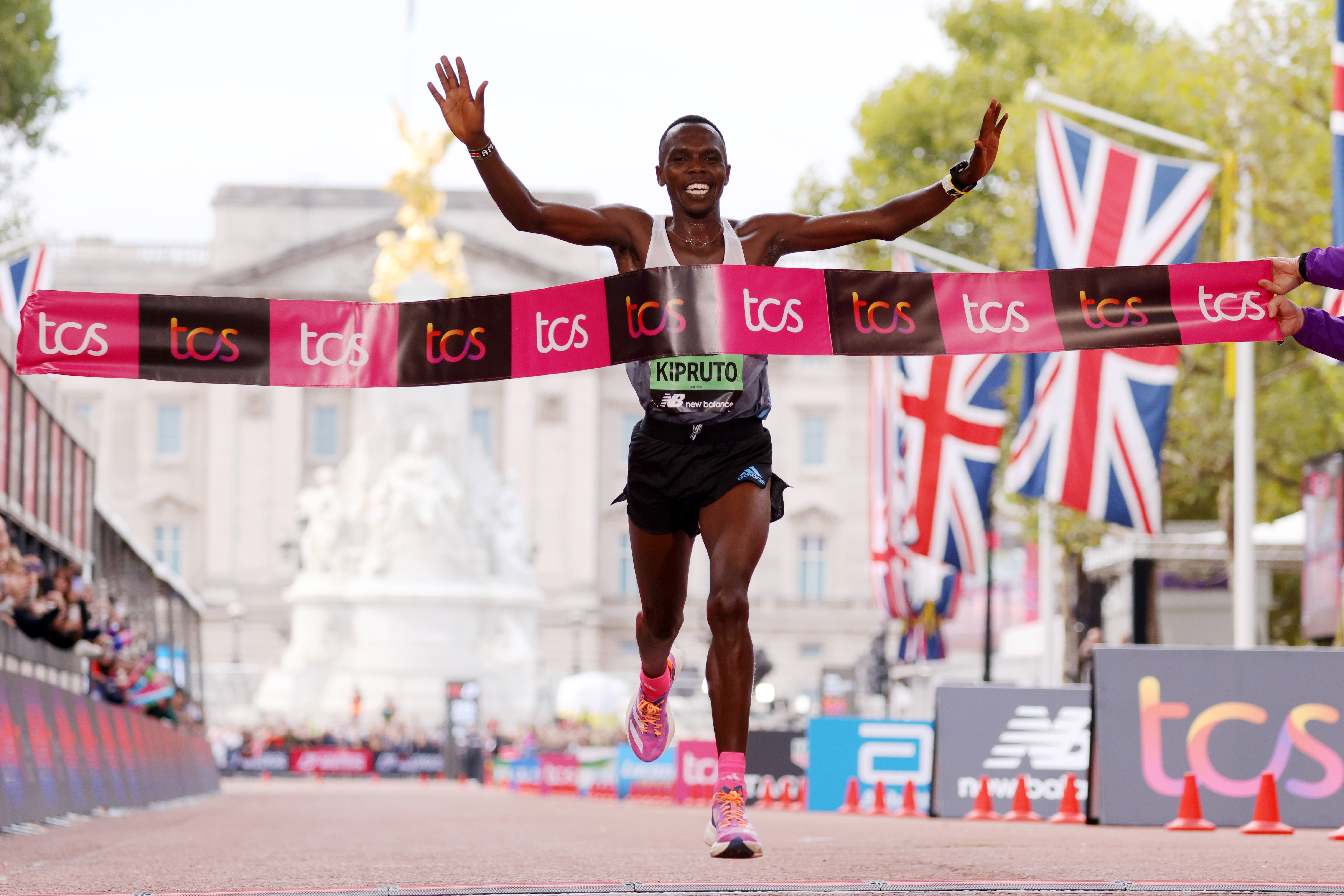
The marathon was always supposed to be ancient. When the event started, at the first modern Olympics in 1896, it was intended as a way of calling on ancient traditions; pointing back to the Ancient Greek origins of the games, and the probably mythical tale of the runner Pheidippides who ran to Athens from Marathon to report on the success of the battle there.
Nobody knows for sure what shoes – or none – Pheidippides was wearing. But his contemporary counterparts’ footwear is so advanced that it would have appeared thoroughly alien to any Ancient Greek, or even the marathon runner of a couple of decades ago.
They are just one technology that is thoroughly transforming the sport of long-distance running, admired for so long for being an ancient and simple art of strapping on some shoes and going as far and as fast as possible. Alongside super shoes have come digital twins and advanced wearables, technologies so advanced that they threaten to smash records and change the way athletes run.
At the men’s press conference for this weekend’s running of the London Marathon, Olympian Chris Thompson was asked what advice he would give to those who are taking on the distance for the first time – which includes Emile Cairess, the young and up-and-coming runner who was sitting alongside him. But he said he would struggle to give advice on what is swiftly becoming a different sport from the one that he came up in.
“It’s an interesting one, because the way shoe tech has changed things – it’s changed things to such an extent that when I ran my debut […] I went to a place I’ve never been to before,” he said. “Everything that day was very emotional, very tough; even the training building up to it.
“And I don’t think it’s like that anymore. I think the shoes – even for me, I’m still trying to understand the shoes. And the point I’m trying to get to is I think these days marathon experiences are unique, they’re different, they’re tough in a different way.
“And I think that’s where for someone like you, going into this, you can be a little more open-minded and it’s not necessarily you versus the event. I felt like it was a challenge between me and the marathon.
“We don’t know what the best way to operate with these shoes is. Marathon running is still being blown open in my opinion. And I think you’re part of a generation where almost what I learnt becomes irrelevant – because you can do so much more.”

Thompson made his marathon debut in 2014. But less than a decade later, he said, the marathon has become such a different race that he was “training completely differently” and his the workouts done by competitors would have been nearly impossible to imagine when he started.
Running shoes have of course never stopped innovating: the origins of Nike can be found in the 1960s, when synergic running tracks started to flourish and coach Bill Bowerman started making grippy shoes with a waffle iron. But in the last 10 years, the “super shoe” and the technological breakthroughs that have powered it have contributed to a dramatic and instant change in the way that people run at both the front and back ends of a marathon. Suddenly, records are falling more quickly than ever, and milestones that didn’t seem possible before – like the two-hour marathon – are in reach.
Nike’s Vaporfly are the trailblazers and cheerleaders of that revolution. The shoes rely on a range of technologies, though almost all of them are in the service of one aim: increasing the runner’s “economy”, by adding more bounce so that each mile requires less work. The most notable of those technologies however is the carbon fibre plate that runs all the way down the shoe, stuffed inside a thick sole that allows for much more energy return.

But while shoes are the most obvious technology that have shaken up running, much more is coming, according to Frank Diana. Diana is a futurist at Tata Consultancy Services – the London Marathon’s title sponsor – and says that the event his company helps put on is heading for even more profound changes.
One of those is the “digital twin”, for instance, which sees engineers create a virtual version of either a person or a course that can then be used to experiment and optimise one’s performance. (This technology is not limited only to running: digital twins can be created for everything from cities to cells.) With a digital version of a race track, for instance, people will be able to better understand the weather and other factors that might influence how one should run a race.
“That’s possible today. I think this is going to get much more impressive as our ability to exploit these swings accelerates over time, but we’re there today,” he says. He points to the virtual marathon that was run when the real one was impossible because of the pandemic, and notes how that helped accelerate many of the technological changes that are coming. In the future, that virtual marathon might not just be a run around the park entered in an app, but a real experience enabled through a headset where runners can race alongside others, in their own headsets in their own homes.
Many might object to losing the experience of traditional running, which is surely among the most embodied and real experiences there are. But Diana says the most likely version of such technologies is in a hybrid form; you might run on real streets, for instance, but wearing contact lenses that mean you can see up-to-date data about what you are doing. It could add a virtual layer to the physical experience that would nonetheless ensure it remained a human and physical thing.

Or the digital twin might not be of a course or a person, but on parts of them, he notes. “We’re specifically working on digital organs – like a digital nose, digital skin, digital heart, digital brain,” he says. That would help not only running but health and wellness more generally: a better picture of our nose might help us breathe better; a digital heart might help us understand how training works or even detect anomalies in real hearts that could save lives.
Much of that work is likely to start with the richest people and countries and gradually flow down to everybody else. That has certainly happened with the shoes – in 2016, Nike’s Vaporflys were a mysterious prototype that were found on the feet of that year’s Olympians, but now you could walk into almost any running shop and buy some, albeit for more than £200 – and it has happened with other technologies, such as wearable trackers and other health devices.
But not everything will flow down. And that will be important in both health and sport: should wealthy individuals live longer? And should wealthier countries be able to add bionic limbs or exoskeletons to their athletes that might make them run faster, or alter their DNA to make them fitter? They are questions that are becoming more and more urgent as the technology approaches, and it is getting closer than many might think.
“The challenges in that context – slowing stuff down, or governing it out of a sport – it still comes back to the fact that there’s really no global perspectives on these things,” warns Diana. “If there’s no global governance that allows us to make those decisions as a community, then what you end up with is nation-specific decisions that create competitive disadvantage.”
There are two ways to address that, he says: slow the pace of change, or accelerate the speed at which we and our institutions are adapting to it. And, throughout history, only that second option has ever worked. Without regulation we might end up in a replay of times through history where certain countries were given to doping, and ended up with vastly inflated success that could not be held back.
World Athletics, the governing body, had tried to do that regulation: in summer 2020, it released new guidance on footwear, which allowed road running shoes to have a heel thickness of up to 40mm. (That – by coincidence or design – just so happened to be the height of Nike’s super shoes.)
But even that ruling has largely served to mean only that the innovation has gone in different directions. Nike’s new Alphafly shoes – which were used by Eliud Kipchoge to run his sub-two-hour marathon in 2019 – keep that same heel height but also add other helpful innovations, such as air pods in the front of the shoe to return even more energy. Even with regulation, new technology will find a way to push through.

It wasn’t just the shoes that helped Kipchoge achieve that somewhat controversial sub-two-hour marathon in Vienna. He also made use of a variety of scientific and technological advances – such as the lasers that shone on the floor to pace him – that are helping to speed up runners across the board, even if they are helping the faster ones more notably.
Just how fast we can run in the future might depend less on what those technologies allow, and more what we allow those technologies to do. Kipchoge’s run in 2019 didn’t officially count as a world record precisely because it relied on technologies not permitted in open running, and it may be those kinds of decisions that actually decide what the future of running looks like.
At that press conference, days before the beginning of 2023’s London Marathon, Chris Thompson parted with some more advice to his younger colleagues. “Be the first athlete to figure out the best way to run with these things,” he told them; the budding, elite athletes that are lining up alongside him might not only be making their own debut in the distance, but also pioneering an entirely new kind of marathon.







